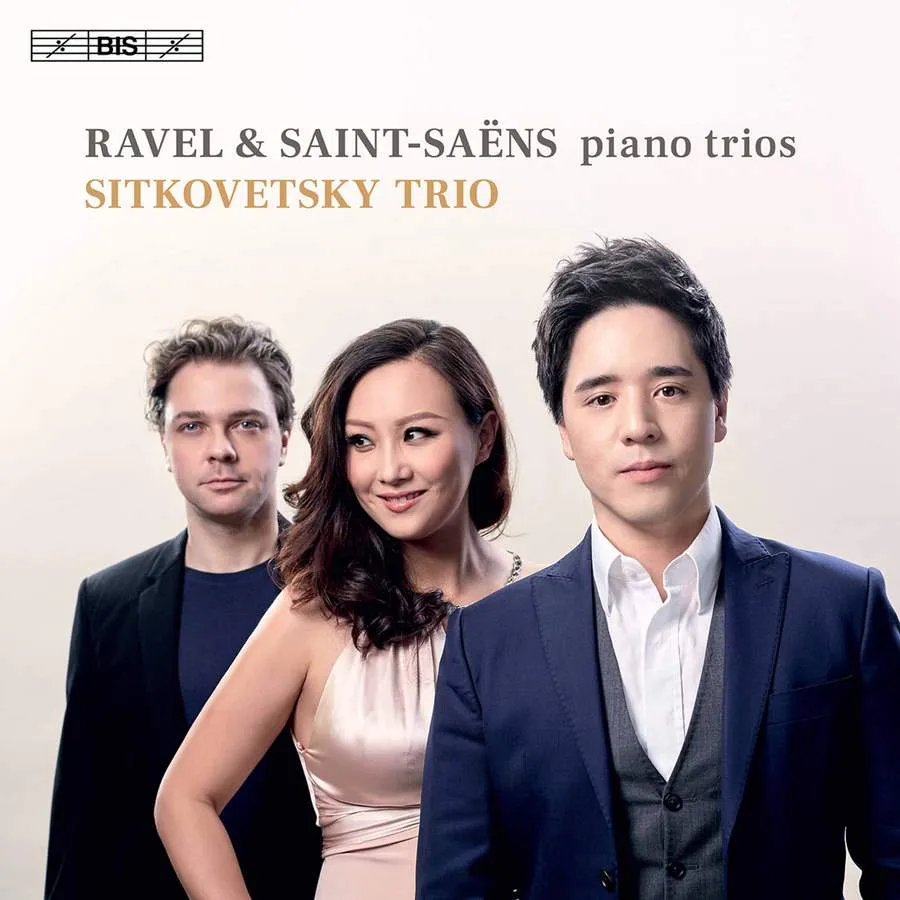
Ravel • Saint-Saëns Ravel: Piano Trio; Saint-Saëns: Piano Trio No. 2 Sitkovetsky Trio BIS BIS-2219 (CD/SACD) 60:58 mins
The Sitkovetsky Trio’s latest release pairs two classics of the French piano trio repertoire in time for Camille Saint-Saëns’s centenary. Ravel’s Piano Trio in A minor, written on the cusp of the First World War, is traced through with Basque inflections and filled with Ravel’s hard thinking on this tricky genre, inspired by Saint-Saëns’s own exploits. It’s ravishingly done by the Sitkovetsky Trio, who more than inhabit the scope of Ravel’s expressive language and ambition in his attempt to expand the form’s musical language.
The opening movement, with its dreamlike sections, is idyllic, tender and gentle. Here as elsewhere, Wu Qian’s glittering piano reflects Ravel’s landscapes, the clouds gathering. The second movement ‘Pantoum’, with its clever reflection of the poetic form it is named after, is all flourish with an edge, Isang Enders and Alexander Sitkovetsky’s cello and violin as one. The third movement ‘Passacaille’, with its mournful instrumental interplay, builds with gentle intensity, expressively played, followed by the skittering glassy harmonics of the last movement in which the Sitkovetsky Trio thrillingly exploit Ravel’s expansive finale.
Saint-Saëns’s Piano Trio No. 2 feels weighty in a different way, and not always to its benefit, but it is more a retraining of the listener’s ears to an earlier, more formal way of thinking after the expressive scope of the later Ravel. The Sitkovetsky Trio mark Saint-Saëns’s allegiance to, and his play with, form; they throw just the right amount of gravitas at this five movement work, the two allegros bookending three lighter, shorter movements that wrong-foot expectations, at times grapplingly intense, at others sweet-sounding and exquisite.
Sarah Urwin Jones